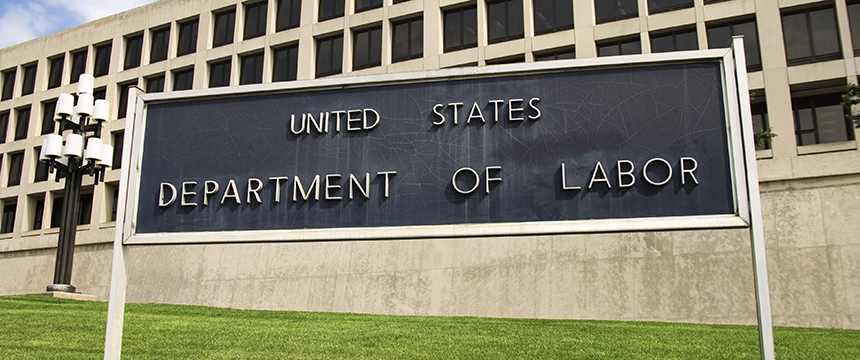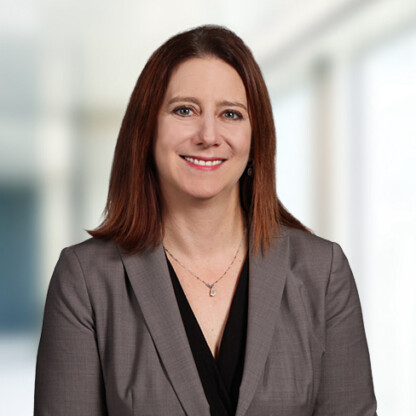Department of Labor Doubles Down and Largely Reaffirms Limitations on FFCRA Leave, But Narrows Health Care Provider Exclusion

1. The DOL Reaffirmed the “Work Availability” Requirement, Meaning Employees Can Take FFCRA Leave Only If They Would Otherwise Have Work to Do.
The District Court had struck down the Final Rule’s mandate that employees were not entitled to paid leave (at least in three of the six qualifying scenarios) unless their employers had work for them to do at the time they sought leave. However, the DOL stood by this “work availability” requirement. The DOL clarified that the requirement applies to all six leave-qualifying scenarios, noting that was its original intent and there is no statutory basis for treating some FFCRA reasons different than others. And, in response to the Court’s critique of the DOL’s “barebones” explanation for the requirement, the DOL provided the following more detailed reasoning:
- The FFCRA provides paid leave when employees are unable to work or telework “due to” or “because of” a qualifying reason—that is, they would not miss work but for their FFCRA reason.
- Consistent with the FMLA’s use of the term “leave,” if an employer has no work for an employee to do, the employee is not taking “leave” under the FFCRA.
- One of the FFCRA’s purposes is to discourage employees who might have COVID-19 from going to work and infecting others. Eliminating the work-availability requirement does not serve this goal.
- Removing the work-availability requirement would lead to the perverse result of some furloughed employees (who do not have an FFCRA reason) going unpaid, while other furloughed employees (who also happen to have an FFCRA reason) receive paid leave.
Though the DOL affirmed that the work-availability requirement applies, it also reminded employers that they cannot make work unavailable in an effort to deny or avoid providing FFCRA (paid) leave benefits.
2. The DOL Reaffirmed the Employer Consent Requirement for Intermittent Leave.
The DOL also reaffirmed the Final Rule’s provision that employees cannot take intermittent FFCRA leave without their employer’s consent. The DOL again expanded on its bases for this requirement, noting:
- Congress did not address intermittent leave in the language of the FFCRA, but granted the DOL broad regulatory authority to ensure consistency with the FMLA.
- The principle of avoiding undue disruption to business operations that exists with respect to use of FMLA intermittent leave, therefore similarly applies to the use of intermittent leave under the FFCRA.
- The Final Rule’s employer-consent requirement is akin to the FMLA’s employer-consent requirement for non-medical leave (for example to care for a newborn or adopted child).
- The Final Rule’s employer-consent requirement for intermittent leave aligns with its definition of “telework” as requiring employer permission; for example, employees ordered to self-quarantine cannot take intermittent leave unless the employer permits telework. (Remember, intermittent FFCRA leave is not allowed except to care for children whose school or childcare closed, unless the employee is permitted to telework.)
The DOL clarified that employees taking FFCRA leave on certain days to align with their children’s hybrid in-person/virtual schooling are not taking “intermittent” leave. Thus, such arrangements do not require employer consent.
3. The DOL Clarified that Employees Must Provide Documentation Supporting Leave “as Soon as Practicable,” Not Necessarily Prior to Taking Leave.
The Final Rule contains distinct provisions on notice of FFCRA leave and documentation supporting FFCRA leave. The original Final Rule required employees to submit supporting documentation prior to taking leave, which the District Court deemed inconsistent with the FFCRA. In the revised Final Rule, the DOL eliminated the advance documentation mandate. Instead, employees can be required to provide documentation “as soon as practicable.” The DOL also corrected an inconsistency regarding the timing of notice for expanded family and medical leave (EFML). The upshot of all this is:
- For emergency paid sick leave (EPSL), notice cannot be required in advance. Notice can only be required after the first workday (or portion thereof) for which an employee takes EPSL. After the first workday, it is reasonable to require notice as soon as practicable.
- For EFML, notice is required as soon as practicable. If the need for EFML is foreseeable (for example, if employees learn their children’s school will be closed in advance of the closure), then it will generally be practicable to provide notice prior to taking leave.
- In all cases, an employer may only require supporting documentation as soon as practicable. According to the revised Final Rule, that will generally be when the employee provides notice.
4. The DOL Narrowed the Definition of “Health Care Providers” Who Employers May Exclude from FFCRA-Paid Leave.
The FFCRA gives employers the option of denying paid leave to “health care providers,” which the DOL’s Final Rule had expansively defined to encompass, essentially, anyone in the health care field. The District Court struck down that definition as an overreach. In the revised Final Rule, the DOL has narrowed the definition to include only:
- Employees who meet the definition of health care provider under the FMLA, i.e., physicians and others who make medical diagnoses; and
- Employees who are employed to provide diagnostic, preventative, or treatment services, or to provide “other services that are integrated with and necessary to the provision of patient care which, if not provided, would adversely impact patient care”—like bathing, dressing, hand feeding, taking vital signs, setting up medical equipment, and transporting patients and samples.
The revised Final Rule offers examples of types of employees who fall into this latter category. It includes nurses, nurse assistants, medical technicians, and any others who directly provide diagnostic, preventative, treatment, or integrated and necessary services. It also includes those who provide such services under the supervision of (or in assistance to) FMLA-defined health care providers, or nurses, nurse assistants, medical technicians, and other direct-providers. Finally, this category includes those who may not interact with patients or report to providers, but whose services are integrated with and necessary to the provision of patient care. For example, a lab technician who processes test results (perhaps for COVID-19 testing) needed for diagnoses or treatment meets this definition. By contrast, IT professionals, maintenance staff, human resources, food service workers, records managers, consultants, and billers, do not.
In short, the DOL’s narrowed definition goes beyond those licensed to provide patient care, but recognizes limits based on employees’ specific duties. Employers should continue to consider exclusions from FFCRA-paid leave on a case-by-case basis, now using the revised Final Rule’s framework.
Companies in all sectors of the economy continue to be impacted by COVID-19. Foley is here to help our clients effectively address the short- and long-term impacts on their business interests, operations, and objectives. Foley provides insights and strategies across multiple industries and disciplines to deliver timely perspectives on the wide range of legal and business challenges that companies face conducting business while dealing with the impact of the coronavirus. Click here to stay up to date and ahead of the curve with our key publications addressing today’s challenges and tomorrow’s opportunities.



